A Theatre Holiday: Part I – New York and Washington, DC
A lot of theatre fans I know can’t leave it alone, even when they go on holiday. In the past few years, I’ve managed to get to the east coast in June on a pretty regular basis. TalkinBroadway.com, the other site for which I write, has a pre-Tony Awards party, and it’s a good opportunity to meet in person people whose posts I read on a regular basis. Also, I lived and worked in Washington, D.C., for eight years prior to moving to San Diego, and not only are there friends to see but the theatre scene is a vibrant one.
This year, I was able to combine with east coast trip with a week in London, where I’m presenting a paper from the scholarship I’m engaged in at San Diego State. So, the trip divides neatly into two halves, one seeing east coast theatre, the other seeing London theatre. I’m writing from London right now, but I’ll cover only the east coast portion in this post, saving the London portion for when I return, at the end of the week.
I think that there’s been general consensus that the New York theatre season has been a middling one. Little of a groundbreaking nature opened on Broadway, though some interesting work appeared off-Broadway, including a musical called Here Lies Love, that was set in a disco in Manila with the patrons milling about as participants (unfortunately, tickets were pretty tough for this one). Nevertheless, even a mediocre season on Broadway produces enough of interest to keep one busy over what amounted to a long weekend (shows Friday evening, three on Saturday, and two the following Wednesday).
Two Tony Contenders
Three of the shows I saw were presented by Lincoln Center Theatre, two at its campus and one in the theatre district. This last show would be Douglas Carter Beane’s The Nance, which is at the Lyceum Theatre, east of Times Square.
San Diego audiences will know Mr. Beane from his The Little Dog Laughed, as well as his books for the musical, Xanadu and the ill-fated The Band Wagon, which played the Old Globe. Here, Mr. Beane has written a drama about homophobia, both societal and internalized. Chauncey (Nathan Lane, who received a Tony nomination for his performance) performs in burlesque at the end of its popularity. He is a “nance,” a man who plays gay for laughs in a world where audiences have really come to see women display their bodies as they dance. Chauncey is also gay in real life, and he has recently acquired a boyfriend (played effectively by newcomer Jonny Orsini). The prospect of having a loving relationship touches off a good deal of fear in Chauncey, who is used to cruising the Automat for one-night stands.
Credit the Old Globe’s artistic director emeritus, Jack O’Brien, for pulling together a superb production, and John Lee Beatty’s rotating set, Ann Roth’s costumes, and Leon Rothenberg’s sound design all won Tonys. Mr. Lane lost in a surprise to Tracy Letts, whose George in the revival of Who’s Afraid of Virginia Woolf was widely admired but thought to have no chance of winning, because the play had closed months before the awards. Another Old Globe connection in this show was Jenni Barber, whose burlesque performer was a big jump away from the roles she played in Some Lovers and Nobody Loves You. By the way, Nobody Loves You is about to start performances at the off-Broadway Second Stage, albeit with a fairly different acting company than we saw.
The other show I saw with a Tony performance contender was Ann, Holland Taylor’s one-woman play about Texas governor Ann Richards. Ms. Taylor, who is based in Los Angeles, portrayed both the Ann Richards of legend who spoke truth to power and power listened, and the Texas governor who was in over her head, from a managerial standpoint, and was not returned to office by the voters. The scenes where Ms. Richards was struggling were agonizing, and Ms. Taylor frankly didn’t have the depth of performance ability to pull them off. But, her scenes as Ann Richards the rhetorical legend were superb and earned her the Tony nod. Ms. Taylor was also hampered by playing a fairly intimate show in the vast Beaumont Theatre at Lincoln Center, and even though she planned to run through the summer, the show has announced a June 30 closing date.
Two That Are New
Lincoln Center Theatre now has a new space, the Claire Tow, up on its roof (see the picture on the site’s front page). It’s programmed by what’s called LCT3, and it’s intended to present new work in an intimate (and very comfortable) space. The show that had just started performances when I was there was Daniel Pearle’s A Kid Like Jake. Mr. Pearle has written an intriguing play about New York parents who are applying for a coveted private school slot for their 4-year-old son, Jake. Jake is a bright and energetic boy who also likes to dress up as a princess. His parents (well played by Carla Gugino and Peter Grosz) are trying to be supportive and nonjudgmental, but they are also distracted by their own issues. The head of Jake’s preschool (a shining performance by Caroline Aaron) approaches the situation in a highly pragmatic manner, resulting in an attempt to use Jake’s “differentness” for strategic advantage. Those who like pat endings will be disappointed, but then there are no easy answers to this situation. A Kid Like Jake would make an excellent addition to the Old Globe’s White Theatre or the San Diego REP season, and I hope that we get to see it.
I also saw (as the third performance of a Saturday) Norbert Leo Butz’s cabaret act at the 54 Below nightclub. Old Globe audiences will surely recall Mr. Butz, who burst on the scene in San Diego and New York in Dirty Rotten Scoundrels. 54 Below tends to present theatre performers (A Catered Affair’s Faith Prince had the evening’s featured slot, while Mr. Butz went on at 11pm), but Mr. Butz eschewed theatre music in his act (the closest he came was “Yoshimi,” from the Flaming Lips’ Yoshimi Battles the Pink Robots). Instead, he focused on songs about female archetypes. Wisely avoiding Freud’s “What do women want?” question, he borrowed from Greek mythology and Jung to present an eclectic mix of rock, pop, jazz, and country songs about women. His two encores will give you an idea of the mix: Johnny Cash’s “A Boy Named Sue,” and “Georgia on My Mind.” As you may recall, Mr. Butz is an energetic performer (to say the least), and his audiences went with him on this somewhat eccentric journey.
Two in DC
In the middle of my east coast stay, I journeyed to Washington, D.C. and saw two shows while there. Like San Diego, Washington is blessed with wonderful theatre, and the productions I saw were from two of its leading companies.
Stephen Sondheim’s Company is one of my favorites, and I’m always looking to see what new insights a production will find. Thus, I was somewhat disappointed when Eric Schaeffer’s production for his home base, Signature Theatre, came across at first look as a pretty straightforward run through the text and music. But, looking closer, an interesting take on the central character of Bobby (Matthew Scott) emerged.
Bobby is a bachelor who seems to have only married friends. They love him and are constantly inviting him over or getting together with him in other ways. Bobby claims that he wants to be married but at 35 hasn’t met the right person yet. The show opens and keeps returning to a surprise birthday party Bobby’s friends have planned for him. He’s presented with a cake and asked to make a wish and blow out the candles. Bobby blows out the candles, but he doesn’t get all of them in one breath. When told that now he won’t get his wish he claims that he didn’t wish for anything in any case.
Mr. Schaeffer had his cast do a photo shoot with a “glamour” artist, and he keeps projecting the pictures onto screens above the action. It is interesting that the shots are all better looking than the actors themselves, except for Mr. Scott, who is as handsome in person as he is in the pictures.
I wonder if Bobby’s friends want him around because he is attractive and they are flattered with his attention and friendship. But, his friends are all in relationships that are somewhat dysfunctional, generally comically so. Bobby keeps saying that he wants to be married, and several of his couple friends assure him that he’s not ready yet. It is easy to take such a judgment on face value, and assume that Bobby really isn’t ready, but Mr. Scott’s performance of the Act 1 closer, “Marry Me a Little,” leaves no doubt about either his feelings or his commitment. So, by the end of the play, Bobby’s actions (which I’ll not spoil) left me convinced that his friends are the ones that have been holding him back. Mr. Sondheim does seem to be interested in the impossibility of friendship, a theme I’ll return to in the London segment when I describe the production of his Merrily We Roll Along that I saw.
DC’s Shakespeare Theatre consistently does first-rate work, and director Rebecca Taichman (who was recently made a company associate) has contributed some particularly stunning productions in recent years (San Diego audiences have seen Ms. Taichman’s work at La Jolla Playhouse productions of Sleeping Beauty Wakes and Milk Like Sugar – she’ll be back next year to direct J. B. Priestly’s Time and the Conways for the Old Globe). She’s currently represented by The Winter’s Tale, that most problematic of Shakespeare’s “problem” plays. The huge problem to solve is how to transition from a first half that is dark and wintry to a second half that is light and spring-like (there’s also some major silliness in the story that doesn’t help).
Ms. Taichman’s solution was to double-cast most of her actors as characters in each half and then not to take an intermission until the second portion of the story had started, so audiences got used to the idea that the actors were now playing different characters. She also staged the action simply, with a set of chairs that could be rearranged or tipped over as needed, and her actors sat on stage when they were not in the action. All in all, it was at least as good a solution as I’ve seen and better than other productions I’ve attended. It will be interesting to see what she does with Priestly.
Two Tony Winners
My last day on the east coast, was a Wednesday matinee day, and I was determined to see two shows. A friend wanted to see Kinky Boots, the Tony winner for best new musical, best score (Cyndi Lauper), and best leading performance (Billy Porter). I was in line at the box office when it opened, and the staff was able to come through with a pair for the evening performance.
That left the afternoon (I had originally bought tickets to see Amanda Plummer and Brad Dourif in Tennessee Williams’ The Two Character Play, but apparently Ms. Plummer had foot trouble and the performance was cancelled). I figured I’d get a discount ticket to something of interest from the TKTS booth in the theatre district, but as I was walking in that direction I passed the Pippin box office. On a hunch, I went in and the box office sold me a ticket for that afternoon’s performance. So, I got to see both the best new musical and the best musical revival, according to the Tony voters.
Pippin first: I should tell you that I’m not a huge fan of circus acts, and director Diane Paulus has taken the concept of a company of players and turned it into a circus. The concept will thrill those who love the circus, as the first act is full of wonderful stunts and tricks, many of them involving the leading performers (I think that Andrea Martin won the Tony for best featured actress in a musical for agreeing to be part of a trapeze act, as much as anything else). It is really a concept that only a professional theatre company could pull off, though, so it makes this revival very Broadway-worthy.
Interestingly enough, the second act cut back on the stunts, and brought forth Rachel Bay Jones as Catherine, the woman with whom Pippin (Matthew James Thomas, who was quite accomplished and game) eventually settles down. Ms. Jones has been overlooked in all of the attention given this show, but I thought she was marvelous. Her performance, along with a greater emphasis on character in Ms. Paulus’ direction, made me a reluctant admirer.
Kinky Boots, on the other hand, was a hoot. An “audience show” from start to finish, it takes the story of a young man (Stark Sand, a veteran of San Diego stage work) who inherits a failing shoe-making business and turns it around with the help of a drag queen designer (Mr. Porter, a fierce performer if I ever saw one). The entire show wears its heart on its sleeve, and the cast looks as though it’s having a ball putting in on. The audience gets energized by the cast and by Ms. Lauper’s score, which manages to throw in plenty of pop hooks while still advancing the plot. The final anthem, “Raise You Up/Just Be,” not only summarizes the message and sends audiences out to the street humming along, but is sure to be programmed by every gay men’s chorus there is within the next two years.
The next morning it was up early and on the subway to JFK for the flight to London and a second week of seeing theatre (and opera). But, you have to wait for that segment, which I’ll post after I get back to San Diego.
Meanwhile, if you get to the east coast in the near future, check out the many fine productions that will be playing in the big cities and even the small towns, as many of them have arts festivals that include excellent theatre. If you discover something wonderful, please post it in the comments or use the Contact Us form to let us know about it.
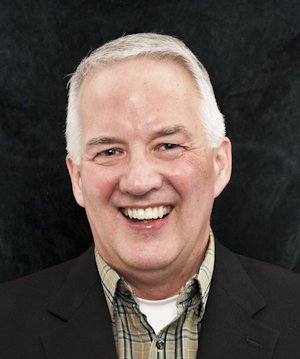
In addition to reviewing theatre for San Diego Story, Bill also reviews for TalkinBroadway.com. He is a member of the San Diego Theatre Critics Circle and the American Theatre Critics Association. Bill is an emeritus professor in the School of Journalism and Media Studies at San Diego State University.

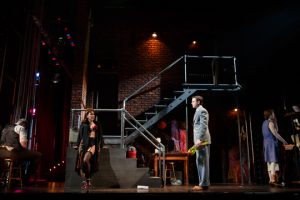
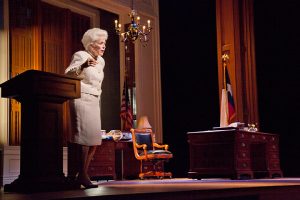
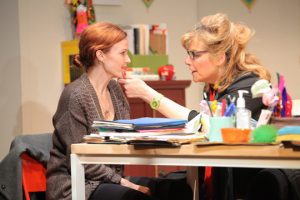


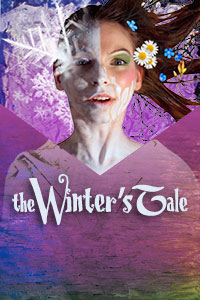
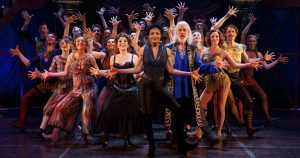
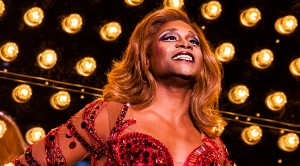
My friend, glad you made it to the east coast before the excellent Tony’s.
We did enjoy Ann and may see Nance this weekend.